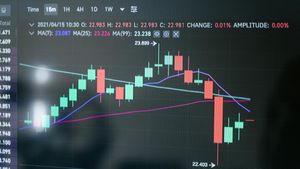The long-anticipated escalation of trade tensions has officially materialized, sending shockwaves through global markets. U.S. President Donald Trump has imposed substantial tariffs on imports from Canada, Mexico, and China, catalyzing widespread declines in several currencies and raising alarms of potential retaliatory measures from the affected nations.
On the weekend, Trump confirmed the implementation of a 25% tariff on imports from Canada and Mexico and a 10% levy on Chinese goods, effective immediately. Analysts have termed this moment as the beginning of "Trade War 2.0," warning of potential long-term impacts on global trade dynamics. The tariffs are seen as necessary measures to combat issues such as illegal immigration and the drug trade, according to Trump.
Markets swiftly reacted to the tariffs. The Canadian dollar plummeted to its lowest point since 2003, hitting 1.4755 against the U.S. dollar. The Mexican peso also recorded significant losses as the dollar surged 2.3% to 21.15 pesos, crossing the pivotal 21-peso mark for the first time since July 2022. Meanwhile, the yuan fell to new lows, reaching 7.3765 against the greenback, signaling the considerable pressure these tariffs are applying on economies heavily intertwined with U.S. trade.
"The surprise for markets...is the immediate retaliation from Canada and Mexico, which has fueled fears of escalated trade tensions and their subsequent impact on global trade," noted Tony Sycamore, market analyst at IG. Both Canada and Mexico have promised countermeasures—a 25% tariff on $155 billion worth of U.S. goods from Canada and retaliatory levies from Mexican officials. China, too, indicated plans for counteraction, pledging to file complaints with the World Trade Organization.
This aggressive move is not only affecting North American relations but is also sending ripples across the Atlantic. The euro fell to its lowest level since November 2022, plummeting as much as 2.3% to $1.0125, reflecting the heightened fears surrounding potential future tariffs on European goods. The Swiss franc also saw declines, dropping to levels not witnessed since 2021.
Market sentiment is shifting as investors brace for the ramifications of Trump's tariffs. "The market needs to structurally and significantly reprice the trade war risk premium," remarked George Saravelos, head of FX research at Deutsche Bank. Analysts are now predicting slower economic growth, which could lead to increased inflationary pressures compelling the Federal Reserve to re-evaluate interest rates.
The impact doesn’t stop at currencies. Stock markets globally have turned red, with the S&P 500 futures falling by 1.6% following the announcement. Commodities like oil have seen price surges, as the integrated oil markets of North America face potential disruptions due to these tariffs. The combination of trade tensions and rising commodity prices has led to fears of recession, particularly for Canada and Mexico, whose economies are significantly tied to U.S. economic performance.
"If this trade shock persists, we could see impacts larger than those felt from Brexit on the UK economy," highlighted Capital Economics, emphasizing the gravity of the situation. Traders remain alert as companies dependent on cross-border supply chains, like automakers and electric vehicle manufacturers, signal potential vulnerabilities as the impact of the tariffs ebbs and flows through the economy.
The looming economic uncertainties and geopolitical tensions make for a convoluted market environment. Currently, the safe-haven appeal of the U.S. dollar is on the rise, with currency traders flocking to U.S. assets as uncertainty grips global markets. This flight to safety often results from fears of inflation, economic downturns, and shifts within the geopolitical sphere, reinforcing the dollar's dominance.
Looking forward, analysts are cautioning investors to remain vigilant about how these tariffs continue to shape financial landscapes and consumer sentiment. The outlook for U.S.-China relations—with tensions running high following these tariffs—will also play a role, as will the responses from impacted countries.
With the U.S. dollar strengthening, foreign currencies are taking significant hits. The coming weeks promise to be volatile as global markets adjust to the new economic reality with Trump’s tariffs at the forefront. All eyes will be on national leaders as retaliatory measures could escalate tensions even more significantly.



